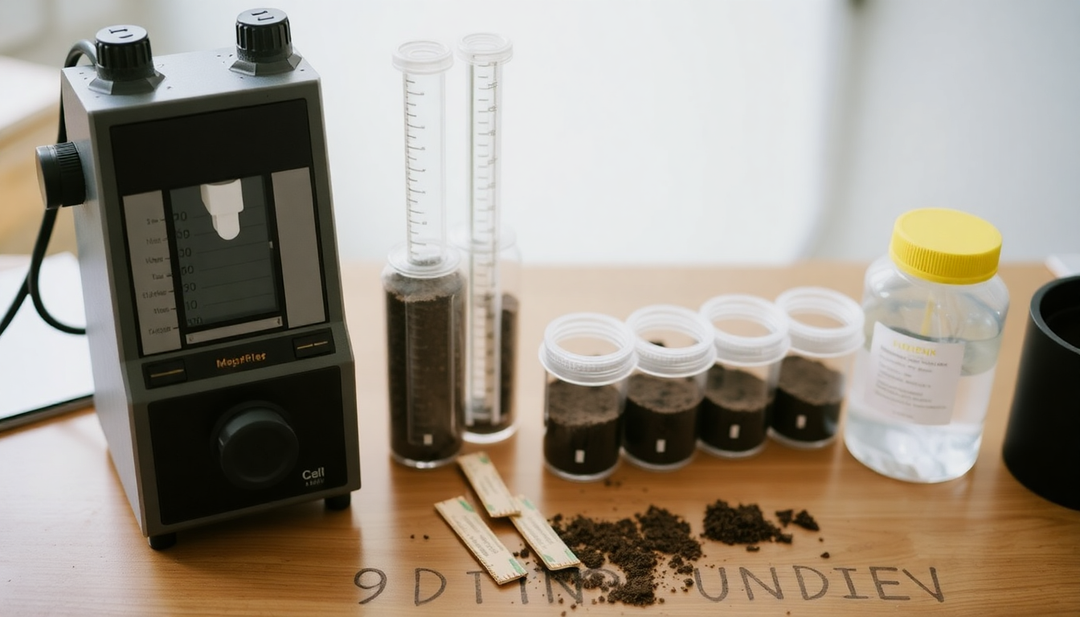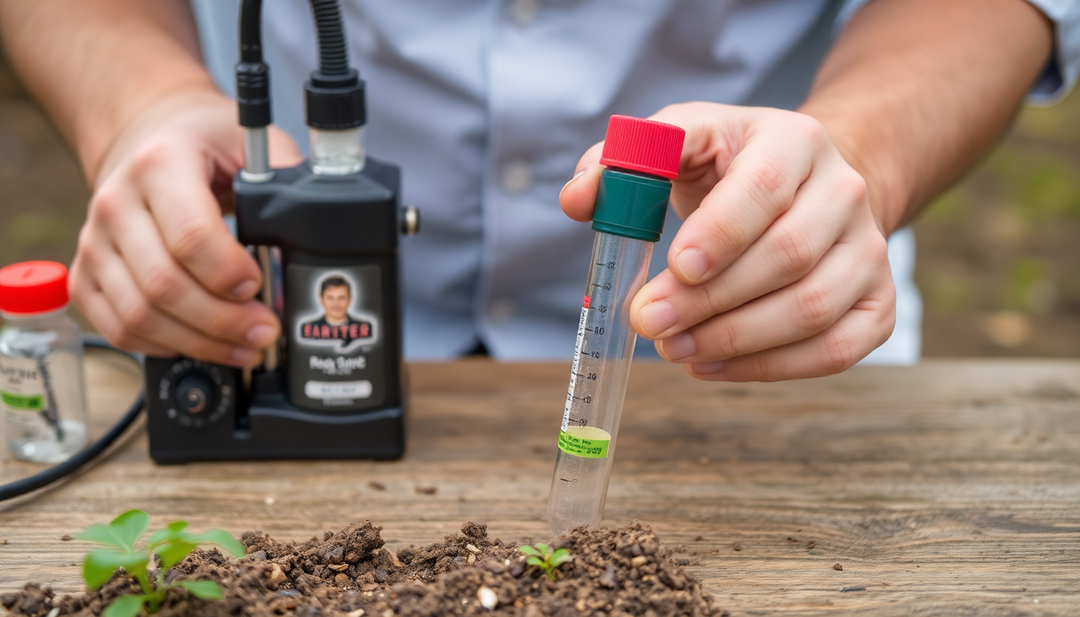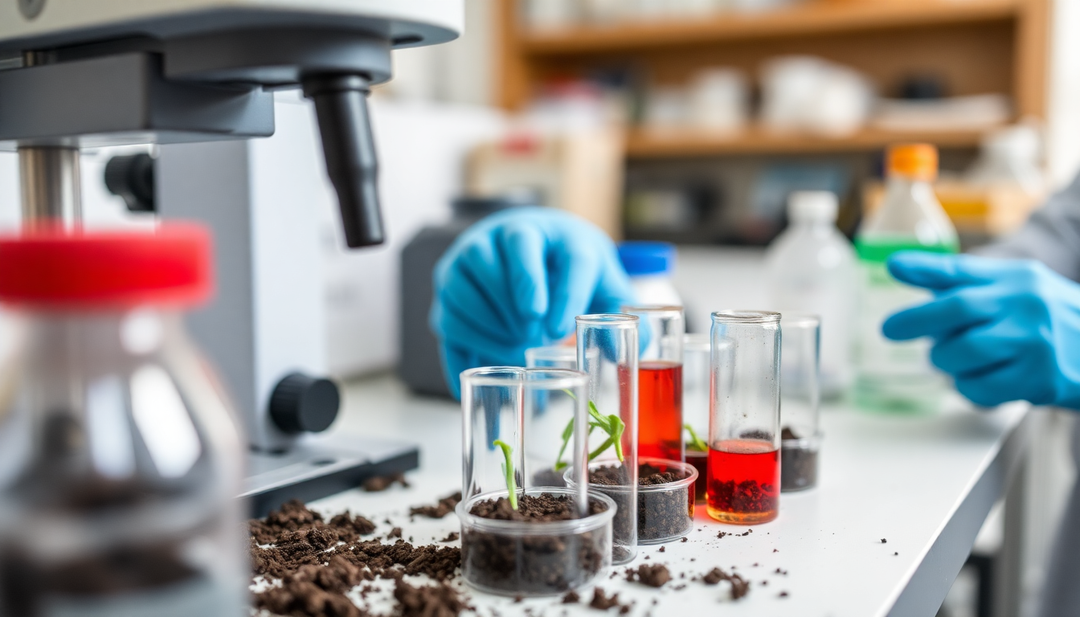Environmental Soil Analysis: Understanding the Standards and Methods in 2025 for an Effective Diagnosis

Introduction
In 2025, environmental soil analysis has become a major issue in the face of growing environmental challenges. Soil contamination can have repercussions on public health, agriculture, and the ecosystem. This article aims to provide an in-depth understanding of analytical standards and methods to ensure effective and reliable soil diagnosis.
Importance of Environmental Analysis
Environmental analyses are essential for several reasons:
- Preservation of public health: Soil contamination can lead to risks to human health, particularly through the consumption of food grown on polluted soil.
- Protection of natural resources: Contaminated soils can affect water quality and biodiversity, making their protection crucial.
- Risk assessment: Identifying the presence of contaminants allows for environmental risk assessment and corrective measures to be implemented.
- Regulatory Compliance: Many regulations require regular soil testing, especially in industrial or agricultural areas.
Standards and Methods of Analysis
By 2025, several standards and methods are in place to ensure efficient and reliable analyses. Here is an overview of the most important methods:
- PCB Analysis: Polychlorinated biphenyls, used in various industrial products, are persistent contaminants. Specific methods, such as gas chromatography, are used for their detection.
- Certiscore : This tool allows for rapid assessment of soil contamination, providing a score based on various chemical and biological parameters.
- HCT and PAH : Polycyclic aromatic hydrocarbons are monitored due to their toxicity. Laboratories use techniques such as solvent extraction for their quantification.
- BTEX : The analysis of benzene compounds (Benzene, Toluene, Ethylbenzene, Xylenes) is crucial in the detection of hydrocarbon pollution.
- Metals Analysis: Heavy metals, both crude and eluate, are assessed to understand their toxicity and impact on soil health.
- Fluorides , Chlorides and Sulfate : Their presence can indicate pollution problems, often linked to industrial activities.
- Cyanide : Although less common, cyanide is a dangerous contaminant that requires strict monitoring.
- Texture and Granulometry: Analyzing soil texture helps understand its ability to retain water and nutrients, thus influencing crop health.
- Acid-Base Status: Soil pH influences nutrient availability and microbial life, making its assessment essential.
- Organic and Biological Status: Analysis of organic matter and biological activity helps assess the overall health of the soil.
- Chemical Balance: Major and trace elements must be in balance to maintain soil fertility.
Environmental Analysis: Diagnostic Process
The process of diagnosing soil contamination follows several key steps:
- Identifying Objectives: Determine the purpose of the analysis, whether it is to look for specific pollution or a general assessment of soil quality.
- Sample collection: Collect representative soil samples from multiple locations. It is crucial to follow strict protocols to avoid cross-contamination.
- Laboratory analysis: Samples are analyzed using standardized methods, ensuring reliable and comparable results.
- Interpreting results: Use experts to interpret the data. They can identify contamination levels and recommend appropriate actions.
- Report and Recommendations: A detailed report is prepared, including recommendations to manage or remediate the identified contamination.
Case Studies
Concrete examples illustrate the importance of environmental analyses:
- Contaminated industrial site: A former chemical plant was remediated using detailed analyses. The results identified specific areas of heavy metal contamination. Targeted remediation methods were implemented to restore the site.
- Agricultural study: In an agricultural region, a study revealed high concentrations of PAHs in the soil. Following the analysis, measures were taken to protect crops and consumers.
- Construction Projects: Before the construction of a new residential complex, soil tests were conducted to ensure the safety of future occupants. The results led to adjustments to the foundations and landscaping.
Practical Advice
To ensure effective environmental analyses, here are some practical tips:
- Choose an accredited laboratory: Make sure the laboratory is certified to perform the required analyses.
- Schedule regular scans: Performing periodic scans can help detect problems before they become critical.
- Interpret the results with experts: Don't just rely on numbers; consulting a specialist is essential for proper interpretation.
- Learn about regulations: Stay up-to-date on soil protection laws and standards in your area.
Environmental Analysis: Sector News
In 2025, several regulatory developments will influence the environmental analysis sector:
- Tighter regulations: New laws impose stricter limits on contaminant levels in soil, forcing companies to review their practices.
- Technological innovation: The emergence of new analytical technologies, such as mass spectrometry, allows for more sensitive and precise detections.
- Sustainability Initiatives: More and more companies are adopting sustainable practices, integrating environmental analysis into their overall strategy.
Conclusion
Understanding environmental soil testing standards and methods is essential for effective diagnosis. By staying informed and adopting rigorous practices, you contribute to protecting our environment. Soil testing is not only a legal obligation, but also an ethical duty to future generations.
Contact Pouryère
For more information on environmental soil testing, please contact Pouryère . Our team of experts is ready to assist you with your soil testing and diagnostic projects. Together, let's work toward a healthier and more sustainable future.



